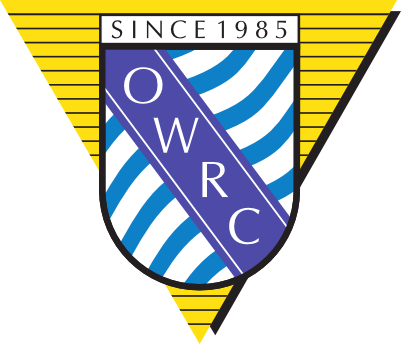By Shirwin Smith
SO WHAT IS “OPEN WATER ROWING”?
Most competitive rowing takes place on protected courses under ideal, flat-water conditions. In contrast, an open-water rower rows across an unprotected, “open” body of water experiencing the varied conditions of the environment. An analogous situation is a track team running on a track compared to a group of trail-runners training in parks and wild lands.
Like trail runners and mountain bikers, open water rowers value the variety and challenge of the “open trail”, or in our case, the “open bay”, and the chance to experience nature while getting exercise. Open water rowing also tends to be more inclusive of recreational rowers and less driven by competition.
However, for those with the urge to compete there are numerous open water events on both coasts. Open water races differ from flat water events both in the venue, open water versus protected water, and length. While flat water events are most often measured in meters, except for the 3-mile head races in the fall, most open water events are measured in miles. Shorter open water events are 5 or less miles; medium length events average 8 to 10 miles, and long distance events, 20 or more miles, seriously test the endurance of the participants.
OPEN WATER ROWING BOATS - A BRIEF HISTORY
For many centuries all rowing was “open-water rowing”, in working boats of various designs. Rowing was not properly a sport until the early 1800’s, but it became very popular throughout that century.
The invention of the sliding seat in 1870 (or thereabouts) revolutionized the sport (leg power made boats much faster!) and gave racing shells their modern configuration. This innovation and others from the growing sport worked their way back into traditional rowing craft, but there remained a clear distinction between the racing shells designed for closed-course competition, and rowing boats for open water.
For many centuries all rowing was “open-water rowing”, in working boats of various designs. Rowing was not properly a sport until the early 1800’s, but it became very popular throughout that century.
Since 1987, the majority of boats rowed at OWRC have been Maas shells or similar designs.
MAAS BOATS
Shortly before the founding of OWRC, Chris Maas had designed and started producing an exciting new type of shell for use in open water conditions. The design was adapted from flat-water single shells, giving the rower the feel and greater potential for speed of a flat-water shell, very different from the heavy, flat-bottomed early designs of open water shells. Although significantly lighter and lower than those, Maas designs – with their flaring hull shape that increases from waterline to deck – are sufficiently stable to be rowed in unprotected waters. The significant difference in Maas boats was the lower freeboard, allowing water to wash across the deck, but lessening windage. Additional innovations were the installation of flotation material inside the hull and Elvstrom-style self-bailers in the footwell of the shells. The result is a shell that cannot sink, and one that can be easily emptied of water washed into the footwell. So yes, rowers in Maas shells learned that getting wet was often part of the rowing experience, but the payback was the ease of cutting through any wind and waves in a safe and unsinkable shell.
Open Water Rowing Center is a dealer for Maas Boats. Learn more about these remarkably adaptable boats here.



